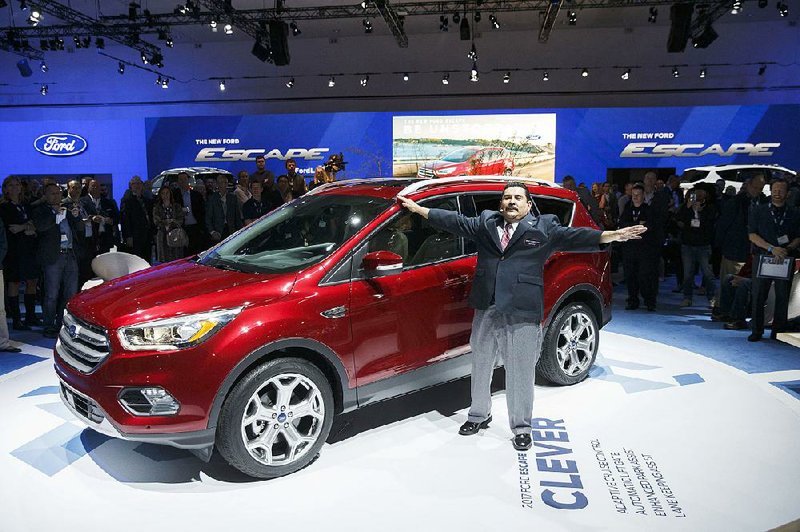SOUTHFIELD, Mich. -- Ford said its new four-year contract with the United Auto Workers will increase its U.S. labor costs by less than 1.5 percent annually by letting the company hire more low-cost workers and move production to factories in other countries.
"The agreement aligns our labor cost structure more closely with our competition and improves our manufacturing productivity and staffing flexibility," Chief Executive Officer Mark Fields said in a statement Monday. Ford said it will have costs of $600 million this year related mainly to the deal's ratification bonuses, in line with its annual forecast.
The contract allows Ford to hire an unlimited number of entry-level workers, who start at a lower wage than veteran workers, after a previous limit of 20 percent of its workforce as new hires. In addition, Ford said it will be able to use more temporary workers, who also are paid less. The agreement gives the automaker "the flexibility to leverage Ford's global manufacturing footprint to improve cost competitiveness," according to the statement.
UAW members at Ford ratified the deal with narrow approval rates of 51.3 percent of production workers and 52.4 percent of those in skilled traders, the union has said. The Ford deal, the richest of the contracts the UAW negotiated with automakers this fall, promises $9 billion in factory upgrades and expansions that create or keep 8,500 jobs in the U.S. The pact provides across-the-board raises and $10,000 in bonuses upon ratification.
The contract, which covers 52,900 U.S. workers, leaves Ford with higher labor costs than General Motors or Fiat Chrysler, according to an analysis by Kristin Dziczek, director of labor and industry at the Center for Automotive Research, and Art Schwartz, president of Labor and Economics Associates and a former GM negotiator.
Ford said the deal "effectively closes the labor cost gap to General Motors and substantially narrows the gap to Fiat Chrysler Automobiles."
Ford's labor costs will climb to $2,600 a vehicle in 2019, from $2,401 in 2014, exceeding Fiat Chrysler Automobiles NV at $2,500 and General Motors Co. at $2,350, according to the analysis by Dziczek and Schwartz.
On an hourly basis, the new contract drives up Ford's labor cost about 5 percent to $60 in 2019 from $57 this year, Dziczek and Schwartz estimated. The dollar cost will match GM's, which climbs 9 percent from $55, and will top Fiat Chrysler's, which will rise 19 percent to $56 from $47, according to their analysis.
"These are generous agreements," said Harley Shaiken, a labor relations professor at University of California at Berkeley. "They proved more difficult to sell than one would have thought looking at all that the UAW achieved."
The Ford agreement, patterned on deals at Fiat Chrysler and GM, provides a path for newer workers to reach senior wages of about $29 an hour over an eight-year period. Those second-tier workers had topped out just above $19 an hour. Veteran workers will get 3 percent pay increases in the first and third years of the accord and 4 percent lump-sum payments in the second and fourth years.
The contract provides wage increases of $10,633, plus a variety of bonuses and guaranteed payouts that will pad the average Ford production worker's pay by $32,513 over the life of the contract, according to the Detroit-based union. Skilled-trades workers' total compensation will grow an average of $35,098 over four years, the UAW said. Those calculations don't include profit-sharing, which totaled more than $30,000 a worker during the past four years.
The previous UAW contract, negotiated in 2011, raised Ford's labor costs by less than 1 percent, the company said at the time.
Business on 12/01/2015
